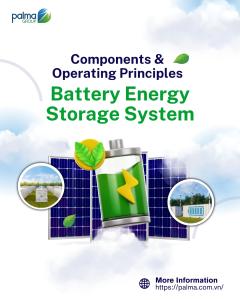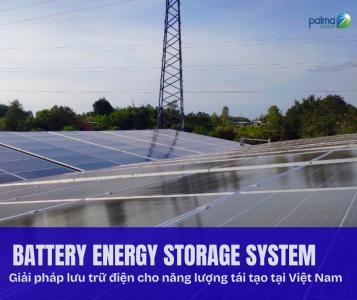News
PALMA SOLUTIONS JSC
Lumen and Watt: Which Determines the Brightness of a Light?
When purchasing solar lights, you often encounter two main specifications: luminous flux measured in lumens (lm) and power consumption measured in watts (W). So, which one should we focus on to assess the brightness of a light? The answer may surprise you: Lumens determine the brightness of a light, not Watts.
- Luminous flux refers to the energy of light emitted by a light source or received by a surface over a period of time, measured in lumens (lm).
- Power consumption indicates the amount of energy a light source uses to emit light over a period of time, measured in watts (W or J/s). Consuming more energy doesn’t necessarily mean the light is brighter.
- Luminous efficacy is the amount of luminous flux (lm) emitted per unit of power consumption (W), measured in lumens per watt (lm/W).
Example: Suppose you have two bulbs:
- Bulb A: 10W emitting 1900 lumens.
- Bulb B: 15W emitting 1725 lumens.
The luminous efficacy of Bulb A is 190 lm/W, while Bulb B is 115 lm/W. This shows that Bulb A is more efficient, producing more light (190 lm compared to 115 lm) for the same energy consumption.
Why is Lumen More Important than Watt?
- Lumens directly reflect brightness: When choosing a light for a space, the primary concern is whether the light is bright enough. Lumens provides this information.
- Watts only show energy consumption: Watts indicate how much electricity a light uses, not its brightness.
- Luminous efficacy matters: When selecting lights, also consider the luminous efficacy (lm/W) to determine which light emits more brightness while consuming less power.
Application in Solar Lights
When purchasing solar lights, prioritize the lumen rating to select lights with brightness suitable for your needs. For example:
- 6,000-lumen solar lights: High power, suitable for large areas like gardens or parking lots.
- 10,000-lumen solar lights: Very high power, ideal for projects like street lighting.
However, to assess brightness accurately, you should also consider the light’s power consumption. A 10,000-lumen light may be brighter than a 6,000-lumen light but might also have lower efficiency.
Other Factors to Consider Besides Lumens
- Beam angle: A wider beam angle illuminates a larger area.
- Color temperature: Examples include 3000K for warm yellow, 4000K for cool yellow, and 6000K for white light. Warm yellow is ideal for cozy living spaces, while white light is suitable for workspaces requiring focus and a clean appearance.
- Lighting duration: This depends on the battery capacity of the light.
- LED lifespan: Longer LED lifespans reduce replacement costs.
Calculating Power and Energy Consumption for Solar Lights
To accurately calculate the power and energy consumption of solar lights, you need the following specifications:
- Peak power of the solar panel: The maximum power the panel can generate under direct sunlight.
- System efficiency: Includes the efficiency of the solar panel, charge controller, wiring, battery storage, and other components.
- Daily sunlight hours: Depends on seasonal weather conditions, orientation, and installation location.
Formulas:
- Energy generated per day (kWh): Peak solar panel power (kWp) × average sunlight hours × system efficiency.
- Light power consumption (W): This can be found in the product’s technical specifications or packaging.
Conclusion
When purchasing solar lights, prioritize high-lumen lights to ensure adequate brightness rather than focusing solely on wattage. Consider luminous efficacy (lm/W) to select efficient lights that provide more brightness with less energy consumption. Additionally, evaluate factors such as beam angle, color temperature, lighting duration, and LED lifespan to choose the most suitable product for your needs.
If you are looking for a reliable supplier of solar lights, Palma is a safe choice. For further consultation on "high-quality, genuine solar lights," contact Palma Group, available 24/7.
22/08/2025 15:02:01
News other
Explore the components, operating principles, battery technologies, and sustainable lifecycle of Battery Energy Storage Systems (BESS) – a key solution toward Net Zero.
Battery Energy Storage Systems (BESS) help Vietnam optimize renewable energy, stabilize the power grid, and accelerate the clean energy transition.
 PALMA SOLUTIONS JSC
PALMA SOLUTIONS JSC







![[PALMA x NOVALAND] WORKSHOP ON MAINTENANCE AND SERVICING OF SOLAR LANDSCAPE LIGHT PLL-30 AT NOVA HILLS – MUI NE [PALMA x NOVALAND] WORKSHOP ON MAINTENANCE AND SERVICING OF SOLAR LANDSCAPE LIGHT PLL-30 AT NOVA HILLS – MUI NE](https://palma.com.vn/upload/z3634653067260_15cb1f4d62b14f3a684fdf4ee9de4870_-11-08-2022-13-55-36.jpg)
_-10-12-2025-00-33-27.jpg)

_-24-10-2021-21-55-01.png)
_-21-04-2022-13-38-01.png)
